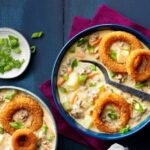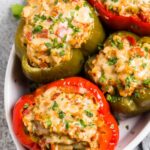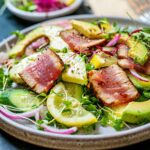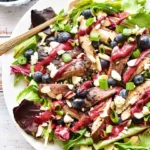Persimmons are a versatile fruit that can add a unique sweetness and rich flavor to a variety of dishes. From sweet desserts to savory salads, there are countless ways to incorporate persimmons into your meals. If you’re looking to explore new and exciting recipes, you’ll find plenty of inspiration with these 15 persimmon recipes.
These recipes offer a range of options that make the most of the fruit’s natural sweetness and texture. Whether you’re a seasoned cook or just starting out in the kitchen, these dishes are sure to help you discover new ways to enjoy persimmons.

1) Persimmon Bread
Persimmon bread is moist and flavorful, making it a perfect treat for fall. Start by greasing an 8 ½ x 4 ½ inch loaf pan.
In a large bowl, whisk together flour, sugar, salt, baking soda, cinnamon, nutmeg, and cloves.
Make a well in the center and add melted butter, eggs, apple cider, persimmon puree, and vanilla extract. Stir gently until combined to avoid overmixing.
Pour the batter into the prepared pan. Bake at 350°F for 60 to 75 minutes, or until a tester inserted in the center comes out clean.
Cool the bread in the pan for about 10 minutes before transferring it to a wire rack to cool completely.
Download the fragrance of fresh-baked bread filling your home. Persimmon bread not only tastes great but also brings a sweet, spiced aroma that’s hard to resist.

2) Persimmon Jam
Making persimmon jam at home is simpler than you might think. Start by selecting ripe persimmons. The skin should be soft and have a deep orange color.
First, remove the stems and peel the skin off the persimmons. Chop the flesh into small cubes. Place the cubed fruit into a large saucepan with a small amount of water.
Heat the fruit over medium heat. Stir frequently to prevent the persimmons from sticking. Once the fruit starts to break down, add sugar. The exact amount depends on your taste, but typically, three cups of sugar work well.
For extra flavor, you can add cinnamon, lemon juice, and lemon zest. Stir the mixture well and bring it to a rolling boil. Continue to stir to avoid burning. Simmer for about 25 minutes until the jam thickens.
To test the consistency, place a small amount on a plate and put it in the freezer for a few minutes. If it’s set, the jam is ready.
Pour the hot jam into clean jars, leaving a bit of space at the top. Seal the jars and process them in a water bath canner for 10 minutes. Let the jars cool on the counter. Now, enjoy your homemade persimmon jam!

3) Persimmon Pudding
Persimmon pudding is a delicious treat that showcases the unique flavor of persimmons. You’ll begin by preheating your oven to 325°F and greasing a baking dish. Select a 9×13-inch or 2-quart one based on your preference.
In a large bowl, mix together dry ingredients like flour, sugar, baking powder, baking soda, cinnamon, and salt. In another bowl, whisk wet ingredients: persimmon pulp, buttermilk, eggs, melted butter, vanilla, and maple flavoring.
Combine both mixtures until just blended. Pour the batter into your greased dish and bake for about 55 minutes. To check if it’s done, insert a toothpick; it should come out clean. Let it cool before serving.
Persimmon pudding can be enjoyed warm or cold, often paired with whipped cream or ice cream. This classic dessert is perfect for holiday gatherings and brings a sweet, fruity flavor to the table. Enjoy!

4) Persimmon Pie
Persimmon pie is a sweet and flavorful dessert that’s perfect for fall. You’ll need ripe persimmons, which add a natural sweetness and unique taste to the pie.
Start by preparing the crust. Use a pre-made or homemade pie crust, and roll it out to fit your pie pan.
For the filling, combine persimmon pulp with eggs, sugar, cinnamon, and a touch of lemon juice. This mix will create a creamy and rich filling.
Pour the mixture into the pie crust. Bake at a high temperature for the first 10 minutes to set the crust. Then, lower the heat and continue baking until the filling is slightly jiggly but mostly set.
Some versions of persimmon pie include a pecan streusel topping. This adds a crunchy texture that complements the smooth filling. Mix flour, sugars, cinnamon, nutmeg, and cold butter until crumbly. Add chopped pecans and sprinkle the mixture on top before baking.
If you prefer a simpler version, you can skip the topping and stick with the traditional filling. Either way, persimmon pie is sure to be a hit at any gathering.

5) Persimmon Muffins
Persimmon muffins are a delightful way to enjoy this unique fruit. To start, gather ripe persimmons and scoop out the pulp.
You will need to mix the persimmon pulp with common baking ingredients. This includes flour, sugar, eggs, and oil. You can also add spices like cinnamon and nutmeg for extra flavor.
Prepare a muffin tin by greasing it or lining it with paper liners. Fill each muffin cup about three-quarters full.
Bake the muffins in a preheated oven at 350°F. After about 20-25 minutes, the muffins should be golden brown.
These muffins make a great snack or breakfast treat. You can store them in an airtight container to keep them fresh.

6) Persimmon Smoothie
Persimmon smoothies are a delicious way to enjoy this unique fruit. Start by washing the persimmons and removing the stems. If desired, you can peel them, but the skin is edible.
Add the persimmons to a blender with frozen bananas, almond milk, dates, vanilla, and cinnamon. Blend until smooth and creamy. This combination results in a rich and naturally sweet beverage.
For a fun twist, consider topping your smoothie with oat milk whipped cream, coconut flakes, or chocolate nibs. You can store any extra smoothie in an airtight container in the refrigerator.
Persimmon smoothies are versatile. You can experiment with adding other ingredients like yogurt, honey, or even a peeled orange for added flavor.
This drink makes a great snack or breakfast option, packed with flavor and nutrients.

7) Persimmon Salad
Persimmon salad is a delightful mix of flavors and textures. It often features a mix of greens, such as arugula or kale, for a fresh base. You can add slices of ripe persimmons which provide a sweet, juicy contrast to the greens.
Nuts, like toasted walnuts or pecans, add a satisfying crunch. Pomegranate seeds are another popular ingredient, adding bursts of tartness.
For dressing, balsamic vinaigrette or a honey walnut dressing are excellent choices. They complement the sweetness of the persimmons without overpowering the other flavors in the salad.
You might also consider incorporating cheese. Goat cheese or feta can add a creamy and tangy element to balance the overall taste.
Feel free to experiment with additional ingredients like cranberries, apple slices, or even prosciutto for a more complex flavor profile.
Persimmon salad is versatile. It’s perfect as a side dish or a light main course. It can fit into any meal plan with ease.

8) Persimmon Cookies
Persimmon cookies are a delicious way to incorporate this unique fruit into your dessert lineup. They offer a soft and chewy texture that makes them irresistible.
Start by preheating your oven to 350 degrees Fahrenheit. Grease or line your baking sheets with parchment paper. This will prevent the cookies from sticking.
In one bowl, mix the dry ingredients: flour, baking soda, salt, and spices like cinnamon and nutmeg.
In another bowl, cream butter and sugar until smooth. Add an egg and beat well. Next, mix in the persimmon pulp. This gives the cookies a wonderful flavor and keeps them moist.
Combine the dry ingredients with the wet mixture. Stir just until mixed. Overmixing can make the cookies tough. If desired, add nuts or dried fruit for extra flavor.
Chill the dough for at least an hour. This helps the cookies hold their shape. Drop spoonfuls of dough onto your prepared baking sheets.
Bake for about 10-12 minutes or until the edges are lightly browned. Remove from the oven and let them cool on a wire rack.
Enjoy your fresh, homemade persimmon cookies!

9) Persimmon Sorbet
Persimmon sorbet is a refreshing treat, especially when made with fresh, ripe persimmons. To create this delicious dessert, start by freezing the persimmons until they are hard. This concentrates the flavors and makes them easy to process.
Rinse the frozen persimmons under water for about 10 seconds to soften the skin. Peel the skin off, just like you would with an apple. This might be easier if you use a towel to hold the cold fruit.
Next, remove the stem with a small knife. If you want a smoother texture, you can microwave the persimmons on low to soften them just a bit. Then, place the frozen persimmon flesh into a food processor and blend until smooth.
If the mixture becomes too soft while blending, scoop it into balls with an ice cream scooper. Place these balls on a parchment-lined sheet pan and freeze again until they harden. This extra step ensures a perfect texture.
You can also add flavor by mixing in a teaspoon of lemon juice or some sweet tea. A pinch of salt can enhance the overall taste, giving you a sorbet that’s both sweet and refreshing. Enjoy your persimmon sorbet on a warm day or as a light dessert after a meal.
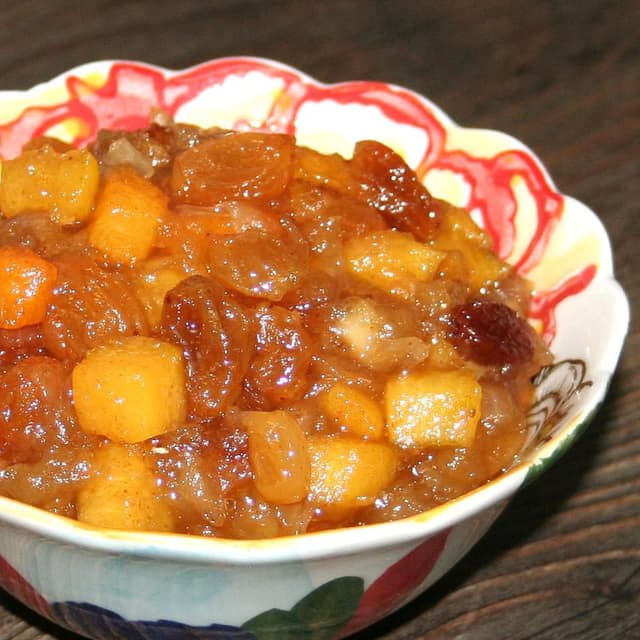
10) Persimmon Chutney
Persimmon chutney brings a spicy and sweet twist to your meals. The chutney combines cider vinegar, onions, apples, raisins, sugar, lemon juice, green chiles, ginger, lemon zest, coriander, and cloves for a rich flavor profile.
To start, place all the ingredients except the persimmons in a large saucepan. Bring the mixture to a boil over medium heat, stirring occasionally.
Once boiling, reduce the heat to medium-low. Let it simmer until the mixture thickens, stirring frequently for about 25 minutes. Then, add chopped persimmons and continue to simmer until they are tender, usually for another 5 to 15 minutes.
This chutney can be stored in sterilized jars. When completely cooled, it makes a great addition to cheese boards, sandwiches, and grilled meats.
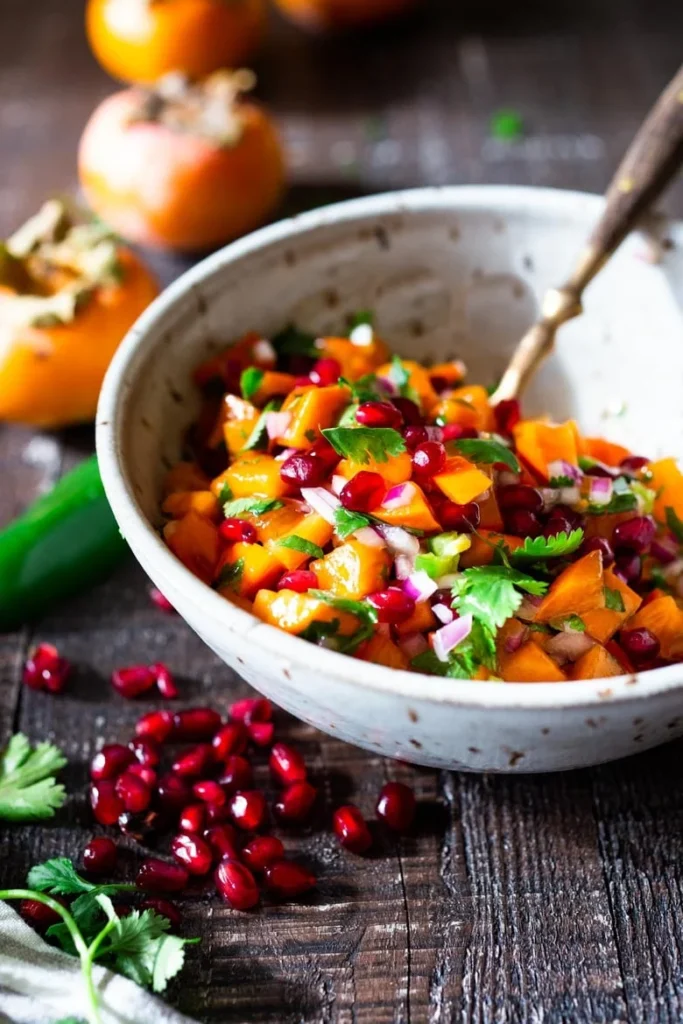
11) Persimmon Salsa
Persimmon salsa is a fresh and vibrant dish perfect for any occasion. To make it, start by finely chopping onions and jalapenos and placing them in a bowl.
Add in some lime juice and salt to enhance the flavors. Next, dice the persimmons and chop some cilantro. Mix them with the onion and pepper mixture.
Taste the salsa and adjust the salt and lime juice as needed. You can also add some pomegranate seeds for extra color and texture. This salsa goes great with chips, grilled fish, or tacos.
For a slightly different flavor, consider adding ingredients like scallions, ginger, or mint. If your persimmons are very ripe, you can scoop out the flesh with a spoon. If they are firm, peel them like an apple before dicing.
This recipe is quick to make and brings a unique twist to regular salsa. Try it out and enjoy the burst of flavors!
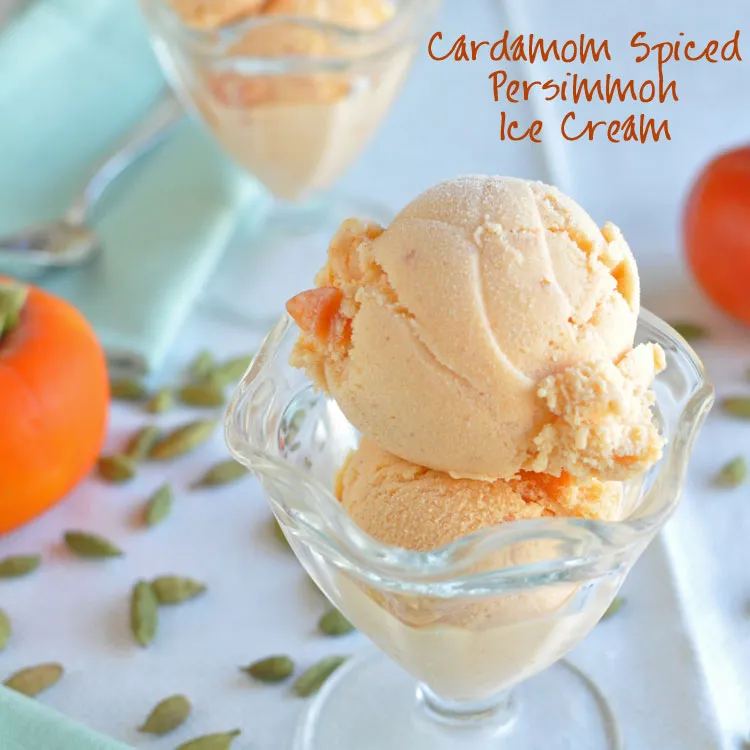
12) Persimmon Ice Cream
Treat yourself to the creamy and unique flavor of persimmon ice cream. To start, freeze ripe persimmons overnight. Once frozen, remove the stems and cut the fruit in half. Take out the seeds and cut the fruit into quarters.
Next, blend the persimmons until smooth. Add sugar and vanilla, and continue blending until well mixed. Slowly incorporate buttermilk while the blender is running.
If you prefer, you can use heavy cream instead of buttermilk. After blending, refrigerate the mixture for an hour if it wasn’t already chilled.
Pour the chilled mixture into an ice cream maker. Follow the manufacturer’s instructions to churn the ice cream. For best results, fill the ice cream maker only two-thirds full.
Enjoy your homemade persimmon ice cream fresh or store it in the freezer for later. It’s a delightful way to savor the sweet and spicy flavors of persimmons all year long.
13) Roasted Persimmon
Roasted persimmons are a tasty and simple way to enjoy this unique fruit. Start by preheating your oven to 375°F (190°C).
Slice the persimmons into thick wedges and place them on a baking sheet. Drizzle a bit of olive oil and sprinkle some salt to enhance the natural sweetness.
Roast the slices for about 20-25 minutes until they become tender and caramelized. This process brings out the rich, honey-like flavor of the persimmons.
You can enjoy roasted persimmons as a side dish or incorporate them into salads. They pair well with leafy greens, nuts, and a tangy vinaigrette.
For a gourmet twist, try adding roasted persimmons to a cheese board. They complement soft cheeses like brie or goat cheese perfectly.
Experimenting with roasted persimmons can elevate your dishes and introduce new flavors to your meals. Note their versatility and see how they can fit into various recipes.
14) Persimmon Tart
Making a persimmon tart can be a delightful way to enjoy this unique fruit. Start by preparing your tart crust. You’ll want to transfer your dough to an 11-inch fluted tart pan. Prick the dough all over with a fork and refrigerate for about 30 minutes until firm.
Preheat your oven to 350°F. Bake the crust until it turns golden and dry, which should take around 25 minutes. Let the crust cool completely on a wire rack. While it cools, thinly slice the persimmon into ⅛ to ¼-inch wedges.
For the filling, you can use a custard base. Fill each tart shell generously with the custard filling. Arrange the sliced persimmons on top of the custard in a decorative pattern, fanning them out in a circular design.
Bake the tart on the center rack of the oven until the persimmons are tender and the crust is a deep golden color, about 25-30 minutes. If needed, cover the tart loosely with foil to prevent over-browning.
Once baked, let the tart cool on a wire rack. Optionally, glaze the persimmons to give them a shiny finish. Your persimmon tart is now ready to serve and enjoy.

15) Persimmon Pancakes
Persimmon pancakes bring a fruity twist to your morning meal. Start with basic pancake ingredients: flour, egg, milk, baking powder, sugar, and a pinch of salt. Add ripe persimmon puree for a sweet, unique flavor.
Use either Fuyu or Hachiya persimmons. Fuyu persimmons are squat and can be eaten firm or soft, while Hachiya persimmons should be very soft before eating.
Mix your dry ingredients in one bowl and the wet ingredients in another. Combine both and blend until just mixed. The batter will have some lumps; that’s okay. Heat a griddle or skillet on medium, and add oil or butter.
Pour about 1/3 cup of batter for each pancake onto the hot griddle. Cook until bubbles form on top, then flip and cook until golden brown. Serve warm with maple syrup or your favorite toppings.
Persimmon pancakes are a delightful way to enjoy these seasonal fruits and add a fresh twist to a breakfast classic.
Health Benefits of Persimmons
Persimmons offer a range of health benefits. They are rich in vitamins, minerals, antioxidants, and fiber, which support various aspects of health, including immune function, heart health, and digestion.
Nutritional Profile
Persimmons are packed with essential nutrients. A single persimmon (about 6 ounces) provides 20% of the Daily Value for dietary fiber. They are a good source of vitamin C, vitamin A, and manganese. Vitamin C helps your body absorb iron and supports your immune system. Vitamin A is important for vision and skin health. Manganese plays a role in bone formation and enzyme processes.
Key Nutrients in Persimmons:
- Vitamin C
- Vitamin A
- Dietary Fiber
- Manganese
- Potassium
Eating persimmons can help you meet your daily nutrition goals and support a healthy, balanced diet.
Antioxidant Properties
Persimmons are high in antioxidants, which help protect your cells from damage. These antioxidants include vitamin C, beta-carotene, and flavonoids. Vitamin C is known for boosting the immune system and may help reduce the risk of chronic diseases. Beta-carotene, found in the bright orange color of the fruit, helps fight free radicals that can cause cellular damage.
Antioxidants in persimmons can reduce inflammation and improve heart health. By neutralizing free radicals, these antioxidants help to prevent oxidative stress, which is linked to various health problems.
Digestive Health
The fiber content in persimmons is beneficial for your digestive system. Dietary fiber helps regulate bowel movements and prevent constipation. Insoluble fiber adds bulk to the stool, while soluble fiber slows digestion, helping you feel full longer and reducing appetite.
Additionally, persimmons contain tannins, which can help manage diarrhea by reducing gut motility. Including persimmons in your diet can support overall digestive health and improve the efficiency of your gastrointestinal tract.
Tips for Choosing and Storing Persimmons
Choosing the right persimmons and storing them properly ensures you get the best flavor and longevity. Pay attention to ripeness and storage methods for the best results.
How to Select Ripe Persimmons
When selecting persimmons, look for ripe and firm fruits. Avoid any with cracks, bruises, or blemishes, as these imperfections can affect the fruit’s quality. For immediate consumption, choose fully ripe persimmons that are bright orange and slightly soft to the touch.
If you prefer a slightly firmer texture, select ones that are still a bit underripe.
There are two main types of persimmons: Fuyu and Hachiya.
- Fuyu persimmons can be eaten while still firm.
- Hachiya persimmons need to be completely soft and ripe before eating to avoid bitterness.
Look for smooth, glossy skin and a vibrant color.
Proper Storage Techniques
Once you’ve picked the perfect persimmons, proper storage is key to keeping them fresh. If they are not ripe yet, you can leave them at room temperature until they soften. Placing them in a bowl with other fruits (like bananas) can speed up ripening.
For ripe persimmons, transfer them to the refrigerator to extend their shelf life. Store them in the crisper drawer or on a shelf in a single layer. Wrapping them in paper towels can help absorb excess moisture.
Frozen persimmons are another option. Lay them on a baking sheet and freeze until firm, then move them to airtight containers or freezer bags. Label the containers with the date and enjoy within 12 months.
Whether fresh, refrigerated, or frozen, the way you store persimmons can make a big difference.
Cooking and Preparation Techniques
Mastering the art of preparing persimmons can elevate your cooking and bring out the best in this unique fruit. Learn how to handle persimmons properly, explore various cooking methods, and discover ideal ingredient pairings for an enhanced culinary experience.
Peeling and Cutting Persimmons
Before you can cook with persimmons, you need to know how to prepare them. Start by trimming the leaves off the top of the fruit. Then, remove the stem. Cut the persimmon in half, and continue by slicing it into wedges. Some varieties, like Hachiya, are very soft and can be scooped out with a spoon.
For Fuyu persimmons, they are more firm and can be eaten like an apple. Remove any black seeds you find as you slice. This ensures you have smooth, seed-free pieces ready for your recipes. When peeling, use a vegetable peeler or a sharp knife to remove the skin.
Cooking Methods
Persimmons can be used in various cooking techniques. Roasting is a popular method that brings out their natural sweetness. Simply cut the persimmons into wedges, toss with a bit of oil, and roast until tender. Baking is another great option; incorporate them into cakes, tarts, or breads.
For stovetop recipes, consider simmering persimmons to make sauces or jams. Slow cooking in a crockpot can also be effective for dishes like persimmon applesauce. Additionally, you can blend persimmons into smoothies or freeze them for homemade ice creams and sorbets.
Pairing with Other Ingredients
Persimmons pair wonderfully with both sweet and savory ingredients. In salads, mix them with pomegranate seeds, toasted nuts, and goat cheese for a balance of flavors. For baking, combine persimmons with spices like cinnamon, clove, and nutmeg to enhance their sweetness.
They also work well in savory dishes. Try using them in stews or as a topping for roasted meats. Fresh herbs such as rosemary or thyme can complement the fruit’s flavor. Whether in cocktails, desserts, or main courses, persimmons bring a distinctive taste that can make your dishes special.
